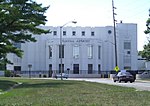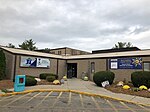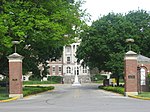Riverside, Indianapolis
Neighborhoods in Indianapolis
The Riverside neighborhood is a historic neighborhood on the near west side of Indianapolis, Indiana, United States. The housing consists mainly of American foursquare-type homes and bungalows built in the 1910s to 1920s. Seventy-five percent of the homes in the area were built before 1939. Riverside is named for its location beside the White River.
Excerpt from the Wikipedia article Riverside, Indianapolis (License: CC BY-SA 3.0, Authors).Riverside, Indianapolis
Burdsal Parkway, Indianapolis Riverside
Geographical coordinates (GPS) Address Nearby Places Show on map
Geographical coordinates (GPS)
| Latitude | Longitude |
|---|---|
| N 39.801111111111 ° | E -86.186388888889 ° |
Address
Burdsal Parkway 1332
46208 Indianapolis, Riverside
Indiana, United States
Open on Google Maps








